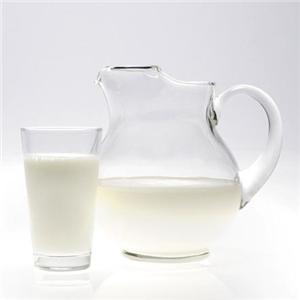How agriculture worked in 2021 in Belarus

2021 statistics: is there a basis for further growth?
According to Belstat, in 2021, in farms of all categories, agricultural production at current prices amounted to 25 billion rubles, in comparable prices - 95.8 percent of the level of 2020. In agricultural organizations, respectively, 21.1 billion rubles and 96.8 percent. The largest share in the total volume of agricultural production is occupied by MINSK (26.1 percent) and Brest (20.5) regions, followed by Grodno (16.6), Gomel (13.2), Vitebsk (11.9) and Mogilev (11 ,6).
In 2021, 7 million 417 thousand tons of grain and leguminous crops were threshed in farms of all categories in weight after completion, with an average yield of 29.8 centners per hectare. The gross harvest of rapeseed is 715 thousand tons, potatoes - 4 million 808 thousand, vegetables - 1 million 708 thousand, SUGAR beet - 3 million 871 thousand tons. The harvest of all crops, with the exception of corn for grain, is less than the level of 2020. The reason is well known: adverse weather conditions, which negatively affected the development of plants. The spring was colder than usual, and the summer saw long periods of heat and lack of moisture. Despite this, farmers produced enough products to feed the population and feed animals.
Since farmers cannot influence the climate, it is necessary to adapt to its changes, improve the technology of cultivating crops. In particular, the increase in areas under winter grains justifies itself. Let's look at a specific example. Gomel region traditionally suffers the most from high summer temperatures. Meanwhile, against the background of a decrease in yields and gross wheat harvest in all regions, both indicators are higher than in 2020. Moreover, the increase is precisely due to the winter crop, while there is a clear drop in the spring crop.
“Winter wheat received enough moisture after the snow melted, rains in spring and early summer,” says Elena Filipovich, HEAD of the crop production department of the committee for agriculture and food of the Gomel regional executive committee. “Thanks to this, there were many grains in the ears. Unfortunately, by the time they were poured, the heat had set in and the grain came out frail. But its yield is still higher than that of spring, which received even less moisture. We learned an important lesson from this and last autumn we sowed 65,000 hectares of winter wheat, 5,000 more than a year earlier. Also from 79 thousand hectares to 86 thousand increased the area of winter triticale. In both cases, by reducing the wedge of winter rye, which gives a smaller yield.
Let's turn to animal husbandry. In 2021, farms of all categories produced livestock and poultry in live weight - 1 million 787 thousand tons (a year ago - 1 million 760 thousand), MILK - 7 million 820 thousand tons (7 million 765 thousand), eggs - 3 billion 531 million pieces (3 billion 495 million).
Since milk is traditionally the most important cash commodity , SG asked the Ministry of Agriculture and Food about the situation with its production in agricultural organizations. So, their gross production amounted to 7 million 588 thousand tons (101.1 percent compared to the previous year). On average, 5,412 kilograms were milked from each cow (plus 98 kilograms compared to 2020). By regions: Brest region - 6569 (plus 115), Vitebsk region - 4025 (minus 7), Gomel region - 4128 (minus 199), Grodno region - 6320 (plus 171), Minsk region - 6048 (plus 245), Mogilev region - 4152 (plus 142 ).
The head of the main department of livestock intensification of the Ministry of Agriculture and Food, Natalia Sonich, said:
— Progress has been achieved primarily through the implementation of technological regulations. If the animals have good living conditions, the premises are dry, clean, good food, water, milking and maintenance of milking equipment are carried out in a timely manner, then all these factors affect the increase in livestock production. The fact that last year 19 and 38 dairy complexes were built in the country and 38 were reconstructed, where the technology of keeping and milking animals is more advanced, also played a role.
Several factors led to a decrease in milk yield in the Vitebsk and Gomel regions. The main ones are the shortage of personnel and non-compliance with technological regulations.
To a greater or lesser extent, there is a lack of workers in all regions. It was decided to radically solve this problem and at the same time increase milk production in the Mogilev region, said Vladimir Kapustin, deputy chairman of the committee on agriculture and food of the regional executive committee:
- We planned to close all the old unpromising farms where they milk into the milk pipeline, transfer people and cows to modern dairy complexes with the receipt of products in the milking parlors. We have enough space for animals. As a result, fewer people can get more products. Such work has already been fully carried out in the Krichevsky district. 70-90 percent - in Mstislavsky, Chaussky, Kostyukovichsky. In 2022, it will continue in stages in others. The process sometimes does not go the way we would like. The old farms produce little milk, but they tend to be in the villages where the people who work there live. When the question of closing and transferring livestock breeders to modern complexes is raised, not everyone is satisfied. Some people start complaining. You have to understand, explain to literally everyone, tell, What are the benefits of changing jobs? Of course, the delivery of people to the ITC and back is a priority.
However, in order to make such changes in the whole country, it will take a lot of time. We have more than 3.5 thousand of all farms, of which 1.6 thousand have milking parlors or robots. As you can see, there are more rooms with milking in the milk pipeline. But the livestock on each is less than on the modern one. On all old farms - about 30 percent. And over two-thirds of milk is obtained from new or reconstructed ones. However, not all livestock facilities with milk pipelines have exhausted their resources, and some of them have higher milk yields than individual new MTCs. Therefore, transformations should be subject to such circumstances.
In 2022, there is an opportunity in all categories of farms to overcome the milestone of 8 million tons of gross milk yield. Of course, for this it is necessary to add to everyone, especially agricultural organizations, where 97 percent of it is received. Recall that by the end of the five-year plan, the goal is to reach 9.2 million tons of annual milk production in the country. To do this, first of all, it is necessary to catch up with the lagging farms and regions, whose milk yield from a cow is several times less than that of the leaders.
Read together with it:
- Как дегустаторы "разбирают" вкус сыра и какие этапы проходит каждый образец, рассказала экспертЕкатерина Беспалова Заведующая отраслевой лабораторией биохимии, микробиологии и технологических процессов переработки молока Института мясо-молочной промышленности Республики Беларусь Представьте себе мир, где вкус - это профессия. Где каждый оттенок аромата имеет значение, а малейшее отклонение от нормы не остается без внимания. Сенсорный анализ - это не просто дегустация, а целая наука, изучающ...
- В 2025 году возрожденный молокозавод в Иванове наладил стабильный выпуск 13 новых видов продукцииЗа год на молокозаводе «РумелкоАгро – Молоко» в Иванове выпустили на рынок 13 видов продукции, в том числе шесть новых продуктов – два вида творога и четыре вида йогурта – за последний месяц. В среду, 22 октября, губернатор Станислав Воскресенский ознакомился с производством новых продуктов и обсудил с руководством предприятия планы по дальнейшему развитию переработки молока. «Завод, как мы и гово...
- «Принцип поля картошки». Как возникла «Русская община» и кто за ней стоитНесколько лет назад никому не известная «Русская община» выросла в федеральную сеть с идеологами, дружинниками и отделениями в регионах России. Как и для чего она устроена, как работают связи с РПЦ и силовиками — в статье РБК — Как узнал про нас? — Из соцсетей. — Как к спорту? — Занимался рукопашным боем, но из-за учебы нет времени заниматься. Хотел как раз познакомиться с людьми у вас, потрениров...
- Повышенное внимание - безопасности пожилых. В Могилеве обсудили работу по Директиве №130 октября, Могилев. Сегодня в Могилевском облисполкоме прошло заседание, посвященное реализации Директивы Президента Республики Беларусь от 11 марта 2004 г. №1 "О мерах по укреплению общественной безопасности и дисциплины". Особое внимание во время обсуждения уделили безопасности пожилых людей, передает корреспондент БЕЛТА.Как отметил во время своего доклада заместитель председателя Могилевского ...





























































